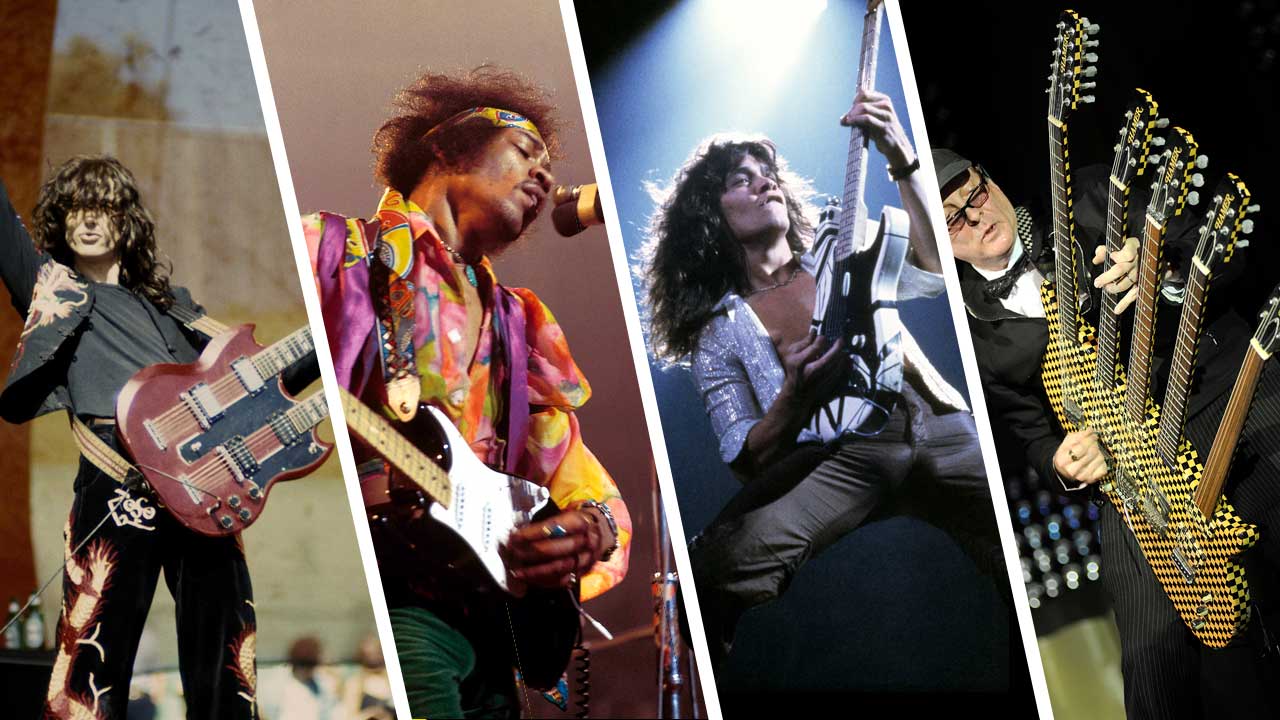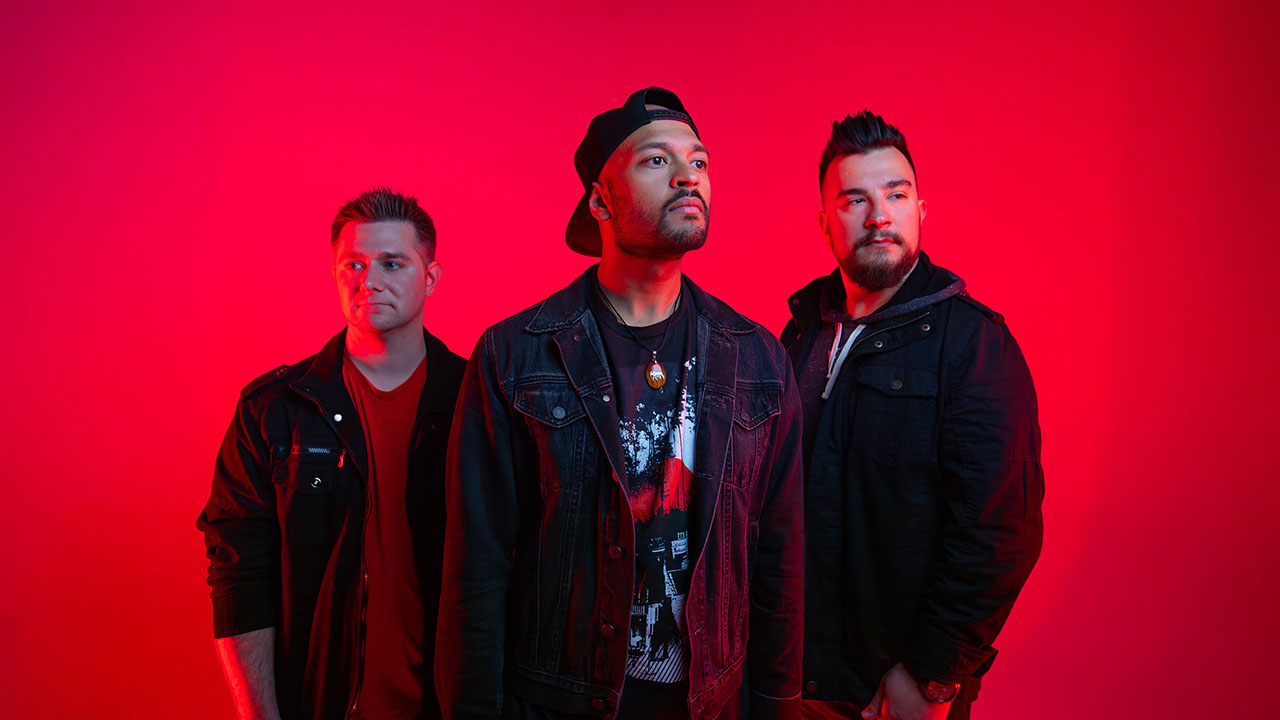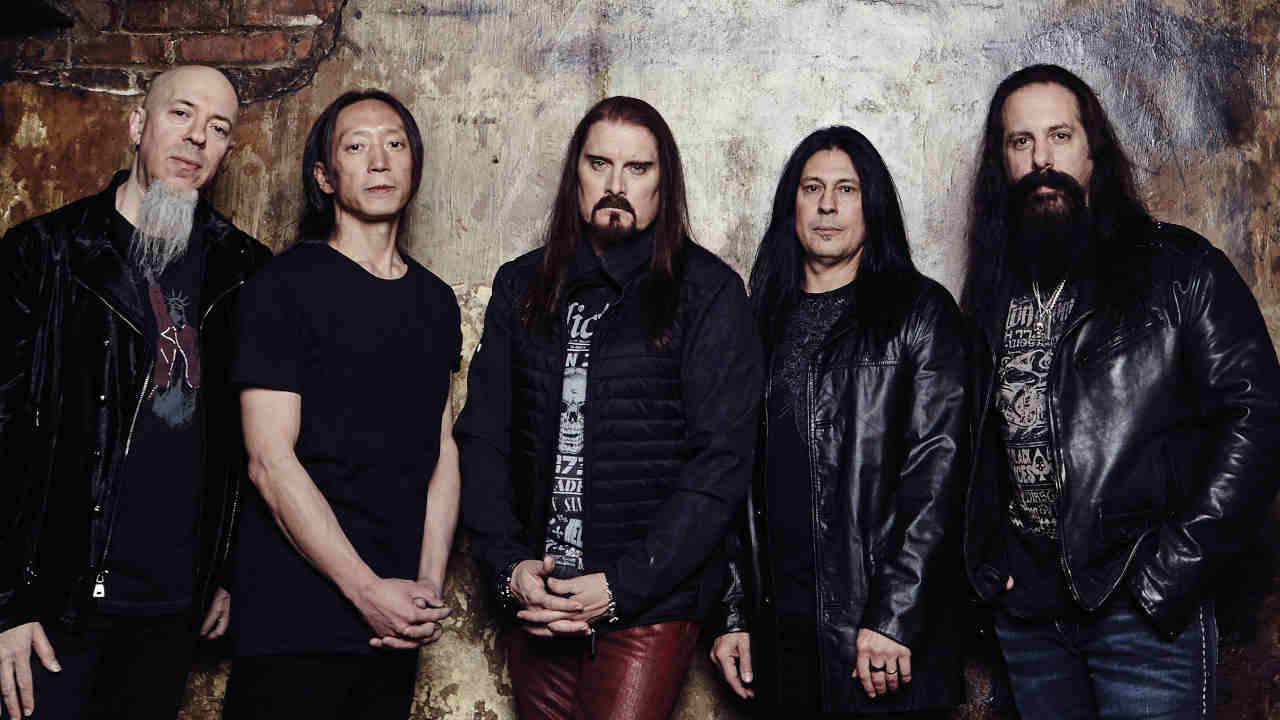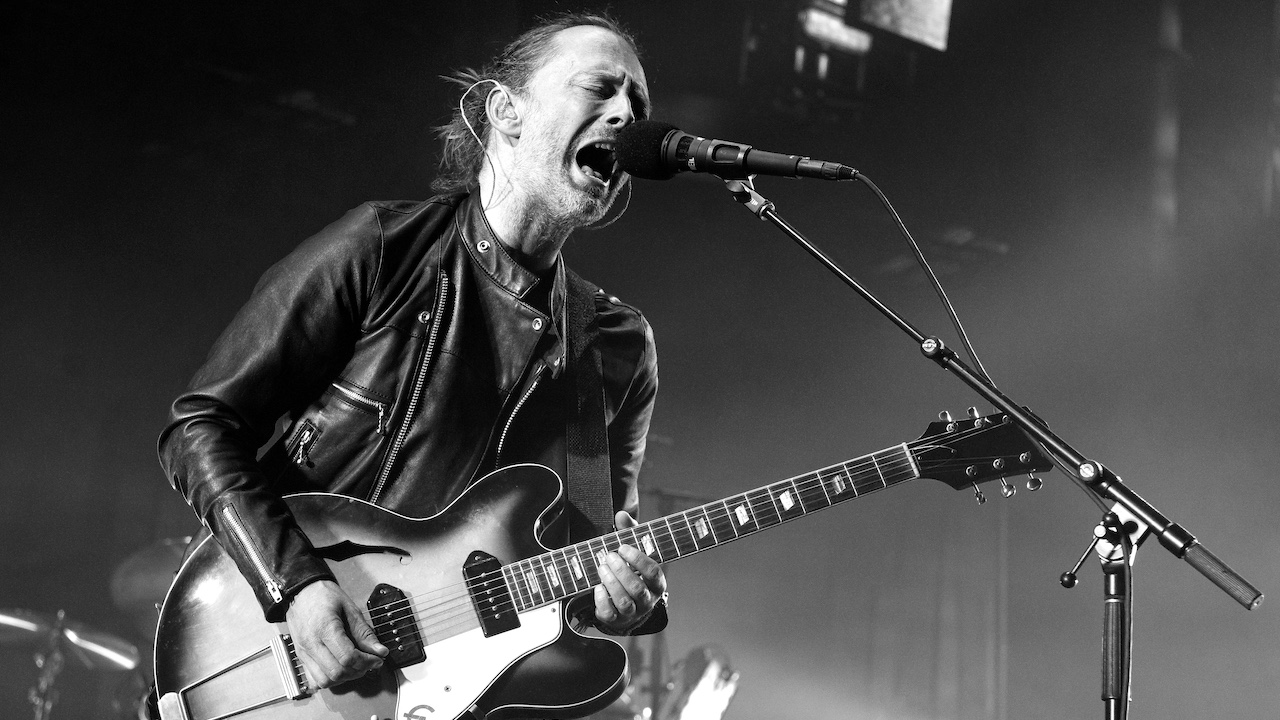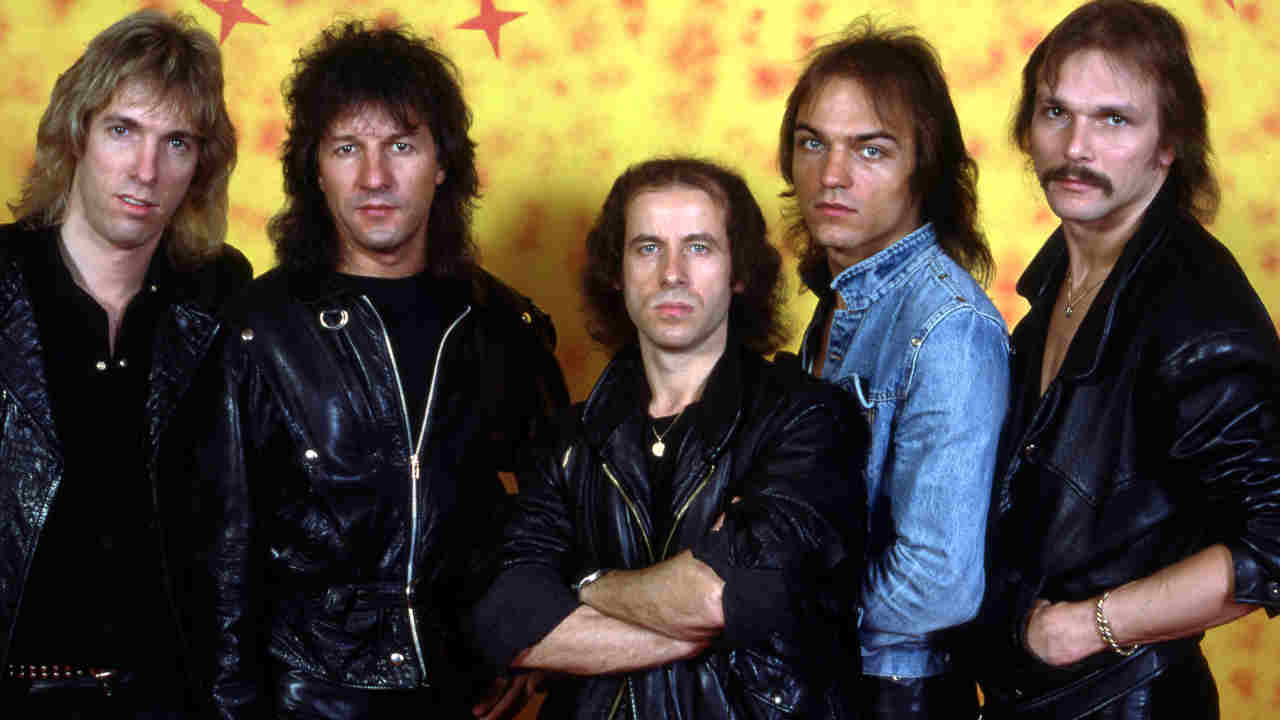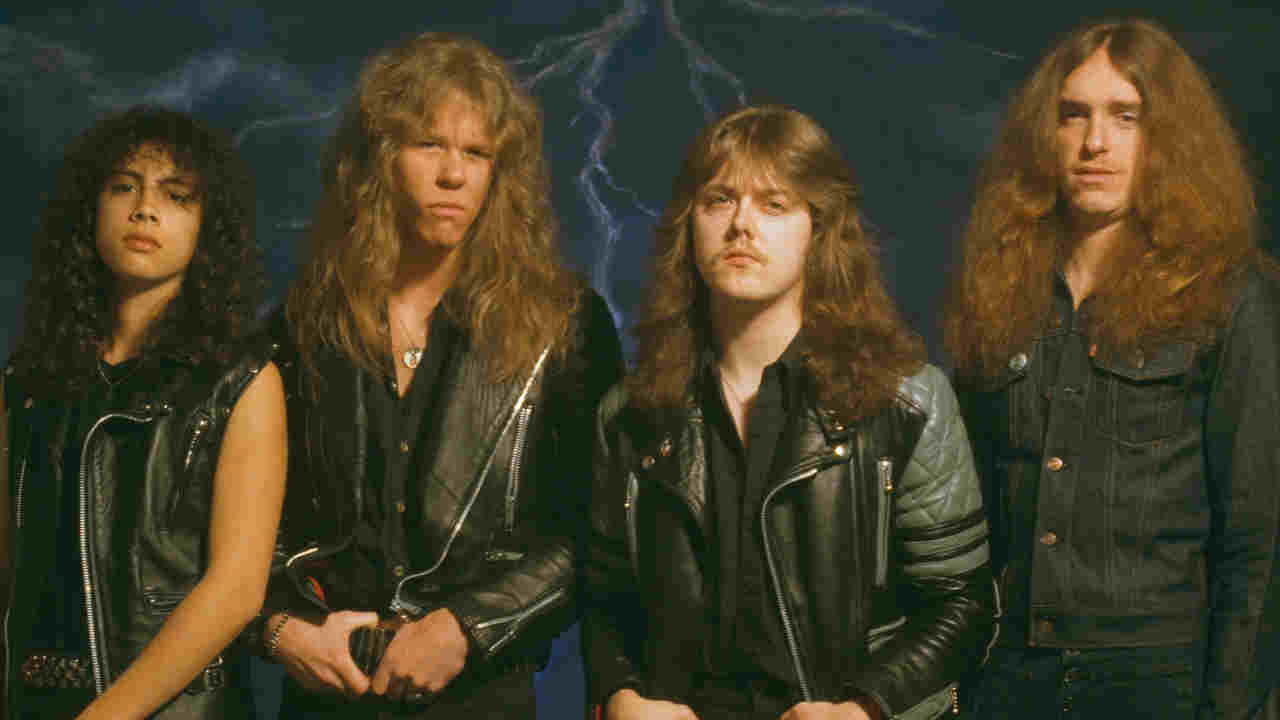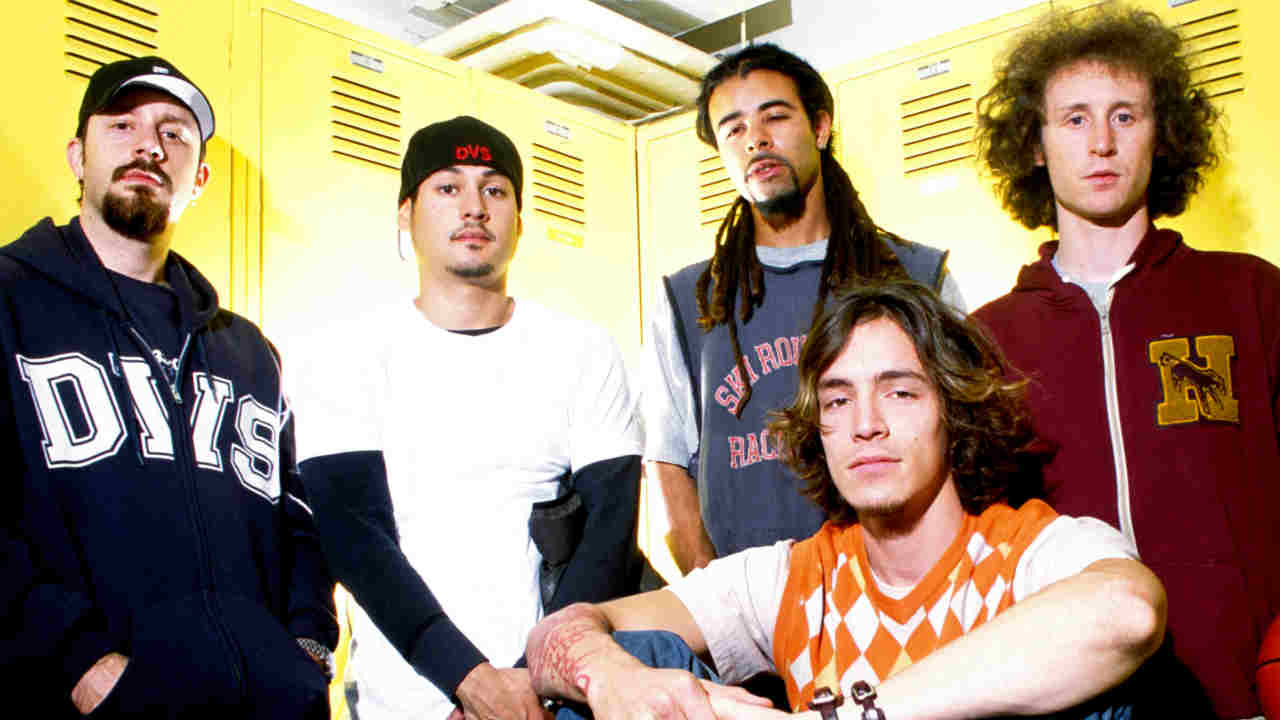A huge amount of rock’n’roll is built on great live guitar work. All the players featured here – and many more besides – have laid down enough killer solos, licks and riffs to fill more magazines than we’ll ever have the time or manpower to make.
Then there are those instances, captured on record or on camera, that truly stand out; those iconic moments in rock’s history when the guitar (and, crucially, the person playing it) transcends boundaries, forges new paths for subsequent generations or just really freaks out everyone fortunate enough to be watching.
Whether through one-off collaborations, reunions, genuinely magical playing (Eric Clapton’s finest Crossroads solo, Prince’s George Harrison homage), envelope-pushing instrumentation (Jimmy Page’s bow, Rick Nielsen’s five-necked axe) or shocking stage antics (Jimi Hendrix's flaming guitar at Monterey, Blackmore losing his shit at Cal Jam), the guitar has been central to some incredible live moments.
Here, we think, are some of the best.

Les Paul and Mary Ford duel on Les Paul guitars
The Colgate Comedy Hour, 1954
In the 1950s, when the name Les Paul was spoken it was often in tandem with that of Mary Ford, his wife and musical partner. The duo were among the biggest recording artists of the early 50s, with 16 Top-10 hits. In 1951 alone, they sold six million records. Small wonder that in 1952 Gibson sought out Les to put his name on their new solid-body electric guitar.
While Ford was the featured singer on the couple’s songs, she was also a fine guitarist, as heard in a famous – and 100 percent live – YouTube clip from a performance on US TV show The Colgate Comedy Hour originally aired in March ‘54. In the clip, Les and Mary perform a mock guitar battle during a performance of There’s No Place Like Home.
Chuck Berry does the ‘duck walk’
The Alan Freed Show, Paramount Theater, New York City, 1956
Charles Edward Anderson Berry became a star in the 50s, but it was this show – in particular the debut of this now-infamous stage move – that would ingrain him into the fabric of live rock’n’roll. Guitarist T-Bone Walker was ‘duck walking’ back in the 30s, but it was Berry who made it popular. It was later famously copied by AC/DC’s Angus Young.
There’s some debate as to when Berry did that show (he told the Washington Post it was 1956, though other sources suggest it was 1955). Similarly, his reasons for doing it in the first place have been subject to speculation (some say it was based on a move he did as a child, others argue it was an attempt to hide the wrinkles in his suit). Either way, it became a signature part of his stage show, making him ultimately more memorable – and more imitated – than his peers.
The Beatles appear on Ed Sullivan
The Ed Sullivan Show, February 9, 1964
“Seeing The Beatles on Sullivan was a defining moment in my and millions of other guys’ lives, all of us naively thinking: ‘I wanna do that!’” Aerosmith’s Joe Perry tells us. Yes, it’s no secret The Beatles helped popularise guitars more than any band before them. Instrument orders skyrocketed as a direct consequence of their debut live appearance on American TV’s The Ed Sullivan Show on February 9, 1964, which broke records for its viewing audience – going out to 73 million people, almost half a TV-watching nation.
“I read somewhere that after The Beatles appeared on [the Sullivan shows] Gretsch sold 20,000 guitars a week, or something like that,” said George Harrison, who played a walnut Gretsch Country Gentleman that day. “I mean, we would have had shares in… Gretsch and everything, but we didn’t know.”
Sister Rosetta Tharpe shreds
TV Gospel Time, mid-60s
Footage of Sister Rosetta Tharpe’s earth-shaking guitar playing continues to go viral, and rightly so. Very few video recordings of Tharpe (who’s often called ‘the Godmother of Rock’n’Roll’) exist, which only adds to her legend.
In one of her most famous clips she’s performing Up Above My Head on TV Gospel Time, proudly wielding her ’62 Gibson Les Paul Custom with the Olivet Institutional Baptist Church Choir behind her. The sheer ferocity in her playing is phenomenal, even by today’s standards.
Bob Dylan goes electric
Newport Folk Festival, 1965
For many of the committed folk purists attending the 1965 Rhode Island festival, Bob Dylan committed the ultimate sin. They were expecting an acoustic performance; instead their poster boy turned up with an unannounced band and plugged in and played his first ever electric set. It was an act of rebelliousness that forged a path for so many artists who followed.
At the time, however, it was a lot for the audience to take in; radio broadcaster John Gilliland described how the acoustic prophet “electrified one half of his audience and electrocuted the other”. The following year in Manchester, Dylan was famously heckled “Judas!” for the same reasons.
Jimi Hendrix sets his guitar on fire
Monterey Pop festival, California, 1967
Very few images, if any, epitomise the dawn of a new age for rock’n’roll as much as Ed Caraeff’s shot of Jimi Hendrix sacrificing his Strat to the flames during Wild Thing at the end of his landmark set. It’s symbolic for so many reasons, although arguably it’s the sheer look of unabashed amazement and joy on his face, almost in a state of surrender to the flames rising from the melting pickups.
It was actually Hendrix’s second attempt at a guitar-meets-lighter-fuel flare-up, having surprised audiences in London a few months earlier while playing Fire, and perhaps surprising himself too – he later visited hospital in need of treatment for minor burns.
Jimmy Page wields a violin bow for the first time
Bouton Rouge, France, 1968
The sight of Jimmy Page, bow in hand, lurching around the stage, is one of rock’s most iconic, and is written into Led Zeppelin lore thanks to its central role in Dazed And Confused. Page’s guitar-bowing premiere was actually when he was in The Yardbirds, when that song was more a prototype beast, not yet the grandstanding epic it would become on Led Zeppelin, and there’s a rawness and an eerie, Eastern mystique to its first appearance, in 1967.
Technically Page wasn’t the first rock star to make use of this technique (that, as far as we know, was British guitarist Eddie Phillips, who used a bow on his guitar from 1963 as a member of The Mark Four and The Creation), but the way Jimmy used it, in both sound and appearance, is by far the most memorable.
Eric Clapton’s Winterland solo on Crossroads
Winterland Ballroom, San Francisco, 1968
Cream bassist/vocalist Jack Bruce has said that Cream played better versions of Crossroads than the one at Winterland in March ’68 that first appeared on their album Wheels Of Fire. If they did, then it’s a crying shame they weren’t recorded, as they must have been stupendous. Because that performance of the Robert Johnson tune is still one of the most spine-tingling four minutes and 13 seconds of live rock music ever (thankfully) committed to tape.
In a thunderous reading of a song that Cream often just skipped through, Clapton plays out-of-this-world double solos that are precise, controlled, electrifying, jaw-dropping, the second one hitting just when you’re marvelling, still bedazzled, at the first one. Truly magnificent.
The Allman Brothers Band record At Fillmore East
Fillmore East, New York City, 1971
Few live albums feel as career-encapsulating as the Allman Brothers Band’s At Fillmore East, a double album recorded over two consecutive nights in March 1971, to the point where it’s these renditions of the songs on it that have since become the renditions.
The interplay between the band members over these drawn-out, elongated jams is what set them the Allmans apart. At the very forefront of their brilliance was Duane Allman, a figure still regarded as one of the greatest slide players of all time, trading against the dynamics of founding guitarist and occasional singer Dickey Betts’s bluesy contributions.
David Bowie fellates Mick Ronson's guitar
Oxford Town Hall, 1972
In January 1972 David Bowie unveiled Ziggy Stardust in all his androgynous glory. Around the same time, Bowie came out as gay (he’d later come out as bisexual), paving the way for a persona that changed the image of ambiguous sexuality in the mainstream. Draping his arm around guitarist Mick Ronson’s shoulders may seem like regular rock-star behaviour now, but at the time – only five years after the legalisation of homosexuality in the UK – it was as revolutionary as it was outrageous.
It all came to a head, so to speak, at Oxford Town Hall in June that year, when Bowie/Ziggy took the whole guitar-as-a-penis-extension idea to a new, rather more literal place. Known as the ‘guitar fellatio’ moment, Bowie’s expression of appreciation for Ronson’s… erm, instrument, was repeated at subsequent shows, carving its way into rock history.
Rory Gallagher plays Belfast at the height of the Troubles
Ulster Hall, Belfast, 1972
It is rumoured that when Jimi Hendrix was once asked how it felt to be the world’s greatest guitarist, he replied: “I don’t know. Go ask Rory Gallagher.” We’ll never know for certain exactly what was said, but the Irish singer-guitarist would have certainly been worthy of such high praise.
When he performed at Belfast’s Ulster Hall on New Year’s Day 1972, there hadn’t been a rock concert there in over six months. Understandably so, given that it was at the very height of the Troubles, at a time when car bombs were going off every night.
If anyone was going to find a way through the chaos, it always going to be Gallagher, whose father was from Derry, the second-largest city in Northern Ireland, and whose mother came from Cork, the second-largest south of the border. What he delivered that night was some much-needed escapism from the continual unrest and lingering threat of death, using blues to heal and unite on an island where religion and politics had so tragically conquered and divided.
BB King plays the notorious Sing Sing prison
Sing Sing Prison, New York, 1973
Johnny Cash’s Folsom set might be better-known, but the sight of BB King bringing hardened convicts to tears in this notoriously harsh, maximum-security institution in New York is nothing short of magic.
The Thanksgiving day show, including behind-the-scenes footage, with performances by Joan Baez and others, was captured in full by filmmaker David Hoffman, and it was Guess Who (originally a crooning, piano-led ballad by Jesse Belvin) that saw BB and ‘Lucille’ grab the hearts of those watching. Alternating between big, bear-like soul vocals and sweet, from-the-gut blues solos, he gave one of his defining performances behind Sing Sing’s bars.
Ritchie Blackmore losing his shit at the California Jam
Ontario Motor Speedway, California, 1974
Backstage at this huge outdoor festival the MkIII Deep Purple played in ‘74, tensions had been running high. Ritchie Blackmore in particular was more than a bit pissed off, and when he hits the stage it shows. Gear is dismantled. Guitars – so many guitars – are destroyed, lobbed into the crowd, rammed into the lens of a pesky cameraman that kept getting in Blackmore’s way.
Amps explode, sending smoke and flames across the stage – only just missing Glenn Hughes’s skin-tight flares. It’s like a scene from Dante’s Inferno, with guitars and several burning amp heads. Through it all, Blackmore fixes those around him with steady, serial-killer eyes, like it’s no big deal. Frankly, everything else that’s happened on any rock stage ever looks tame compared to this.
Thin Lizzy’s Still In Love With You
Hammersmith Odeon, London, 1976
Still In Love With You, a truly heartbreaking song, was proof (if anyone needed it) that Thin Lizzy really weren’t just about good-time shitkickers like The Boys Are Back In Town and Jailbreak.
Frontman Phil Lynott is on devastating form on this performance, the song’s defining live rendition (it would go on to appear on Lizzy’s seminal live album Live And Dangerous), but it’s Brian Robertson and Scott Gorham’s solos that really elevate it above all others, with Gorham soaring in with Santana-esque tones to compliment his bluesy partner in crime, both guitarists leaving their hearts on the strings. Robertson, who left the band at the end of the tour that this features on, reportedly considers Still In Love With You his signature Lizzy song.
Van Halen kill it in Pasadena
Pasadena Convention Center, 1977
If any concert marked the arrival of Van Halen, it was this (since widely bootlegged) performance in their home city just weeks after recording their game-changing debut album.
Guitarist Eddie Van Halen, then only 22, was already very much the full package, from those perfectly overdriven tones to his whammy-bar stunts and, arguably the most groundbreaking of all, the two-handed licks covering great distance at high speed with natural finesse. Armed with a killer set of their earliest songs, the band were taking no prisoners, which is what makes the recordings such a wildly enticing listen all these years later – dazzling charisma and talent captured in its full, unadulterated glory.
Guitar music would never be the same again. “Friends, it’s true, Van Halen is here,” singer David Lee Roth said with a grin as Eddie tuned his higher strings. “Do you know when we started out here, there weren’t too many people, but now it appears things have changed!”
Pete Townshend’s knee-slide at Shepperton
Shepperton Film Studios, Surrey, 1978
Filmed before an invited audience specifically for The Who’s movie The Kids Are Alright, the band’s visceral assault on Won’t Get Fooled Again, the climactic closing track on their 1971 album Who’s Next, marked not only Pete Townshend’s defining live guitar moment, but also drummer Keith Moon’s final performance.
As Roger Daltrey punctuated primal über-mod roars with bouts of alpha-male microphone twirling, and John Entwistle morosely applied himself to delivering a dazzling display of bass guitar dexterity, Pete Townshend capered, spun, windmilled, leaped and generally beat the living shit out of his instrument.
Possibly the most physical player around, Townshend’s passion teetered on the brink of madness as lasers lacerated a pulsing synth breakdown that only offered apprehensive calm before the inevitable storm. As Daltrey screamed his iconoclastic ‘Yeah!’, Townshend simultaneously power-chorded and took flight, finally landing a cross-stage knee-slide that really has to be seen to be believed. Awesome.
The Cramps play Napa State Mental Hospital
Napa State Mental Hospital, California, 1978
While show-stealing spats of improvisational technoflash were never Cramps guitarist Poison Ivy’s stock in trade, she’s as reliably stoic as the day’s long. Her entire career was typified by unshakeable poise. Despite the auto-destructive Franken-Iggy antics of the wildly unpredictable Lux Interior perpetually playing out about her (in scraps of lingerie, teetering on stilettos, crawling up her legs with a microphone down his throat), the ice-cool, Elvis-sneering Ivy simply set to work teasing forth her Scotty Moore runs and Link Wray rumbles.
Her trademark grace under pressure never faced a sterner test than at Napa State Mental Hospital where the unstoppable force (Lux) faced the immovable object (the hospital inmates) with neither stage nor security. Captured in shaky, psychobilly Cuckoo’s Nest, snuff-movie monochrome, poker-faced Ivy casually delivers Human Fly’s gloriously understated guitar solo as one patient in the audience screams maniacally into Lux’s abandoned microphone and another performs enthusiastic ‘press-ups’ at her feet. Über-cool incarnate.
Keith Richards fights off a stage invader
Hampton Coliseum, Virginia, 1981
If anyone ever found themselves invading a stage occupied by the Rolling Stones, then hopefully they took great care to avoid Keith Richards at all costs. Because, as one over-enthusiastic fan found out when he invaded Keith’s space at a gig at the beginning of the 80s, he would probably take off his Telecaster, wave it around and beat you with it until you leave.
Footage of him doing that was uploaded by the Stones themselves a few years ago – perhaps as a stark warning to anyone mad enough to be thinking about gatecrashing their set. "What if he had a gun in his hand or a knife?" asked Richards. "I mean, he might be a fan, he might be a nutter, and he’s on my turf. I’m gonna chop the mother down!”
Rick Nielsen’s five-neck guitar arrives
Chicagofest 1981
It was the year Cheap Trick guitarist Rick Nielsen’s five-neck monster came into being, and the mad-for-it hometown crowd proved its joyous, cartoonish appeal – whooping in delight as it was whipped out for Just Got Back. Built by laminating the bodies of five Hamer Specials together, it’s one of the most bonkers, backbreaking and, ultimately, iconic guitars in rock.
“The original concept was to have a six-neck that spun like a roulette wheel, so that I could play one neck and then rotate to the next,” Nielsen says, “but then I decided to go with something more conservative – five necks in a row!” Yeah, five necks in a row is really conservative.
Stevie Ray Vaughan gets booed by blues ‘purists’
Montreux Jazz Festival, Switzerland, 1982
To a present-day Stevie Ray Vaughan fan, the idea of the iconic blues maverick being booed by anyone is unthinkable. That he rose above it all so brilliantly speaks volumes about his innate virtuosity and no-bullshit character. During his performance of Texas Flood at the ’82 Montreux Jazz Festival, Vaughan reached into his bag of Albert King-meets-Jimi Hendrix licks – not to mention reaching behind his back, where his Strat rested for the final quarter of the epic performance.
SRV floored almost everyone that night; a handful of very loud-and-clear blues purists can be heard (and clearly seen in YouTube clips) booing him, bassist Tommy Shannon and drummer Chris Layton. Still, he must have known it went well when David Bowie appeared backstage, and an important alliance was born.
A young Dimebag Darrell rips it up
Projects In The Jungle tour, 1984
You don’t have to look hard to find video footage of groove metal superstar Dimebag Darrell doing what he did best. And while there’s an abundance of material from Pantera’s glory years, it’s a video from their second-album tour – shot in 1984 when the guitarist was just 18 – which surfaced some 13 years ago that best showcases just what a world-beating talent he was at such a young age.
During an elongated guitar solo, he rips through Van Halen and Randy Rhoads licks at blistering speeds, almost without a care in the world. It offered proof that he was destined to become the guitar hero for a new age.
Queen play Live Aid
Live Aid, Wembley Stadium, 1985
Even Bob Geldof admitted that, despite stiff competition from Led Zeppelin, Elton John and David Bowie, Queen were the undisputed highlight of the pair of charity concerts he organised in 1985.
With a tight 20-minute set-list comprising Bohemian Rhapsody’s first half, Radio Ga Ga, Hammer To Fall, Crazy Little Thing Called Love, parts of We Will Rock You and finally We Are The Champions, it’s easy to understand why. It was the moment when they reminded us just how wonderfully Brian May’s snarling mids (paired with Freddie Mercury’s soaring vocals) led those skyrocketing anthems.
The all-star Les Paul tribute
Brooklyn Academy Of Music, 1988
On August 18, 1988, a now-hard-to-fathom collection of famous guitarists got together to celebrate the life and music of guitar great Les Paul, who was 73 at the time. The show, which was released on VHS (with an ridiculously long title), brought Paul on to the same stage with Eddie Van Halen, David Gilmour, Brian Setzer (who bellowed: “Hey, Eddie Van Halen, get your butt up here, man!”), BB King, Stanley Jordan, Steve Miller and even Waylon Jennings.
This show has become even more poignant now that some of its biggest stars – Paul, Eddie and BB – have passed on. It’s a bit like that video of George Harrison, Eric Clapton and Ringo Starr performing While My Guitar Gently Weeps in 1987; it was cool then, but it’s priceless now.
Rage Against The Machine cause chaos at the BBC
The Late Show, BBC studios, London, 1993
Just occasionally, the BBC pulls a blinder. By 1993, most of America’s alt.rock’s big beasts had visited BBC2’s high-minded arts show The Late Show, including Pearl Jam, Sonic Youth and Jane’s Addiction. But almost three decades later it’s Rage Against The Machine’s live take on Bullet In The Head that remains white-hot in the memory.
It was a performance so blistering and bristling that it threatened to splinter the nation’s TV screens, with frontman Zack De La Rocha’s f-bombs and his ‘Fuct’ T-shirt enough to give squeamish producers the cold sweats. But it was guitarist Tom Morello who scrawled six-string revolution in flaming foot-high letters, kicking off with a fair impression of a Black & Decker drill, kneeling before a Marshall stack to conjure screeds of frayed morse code from his Arm The Homeless guitar, and attacking the song’s anarchic final straight like a man with seconds to live.
The Beeb had never seen anything like it.
Nirvana go Unplugged
Sony Music Studios, New York City, 1993
There are numerous factors as to why Nirvana’s MTV Unplugged In New York set would become one of their most renowned. As the band’s first release in the aftermath of Kurt Cobain’s death, those live recordings were a stark reminder of what the world had just lost – a brilliantly talented songwriter whose thought-provoking lyrics, chordal simplicity and chromatic single-note motifs made a difference to many lives.
It was often his imperfections that made him such a truly left-field visionary. A case in point is the opening part of his outro solo on the cover of David Bowie’s The Man Who Sold The World, which may very well have been a mistake. If it was a mistake, then the way he owns it and recovers is what makes the interpretation perhaps even better than exact correctness, giving the line a somewhat menacing, atonal flavour.
Prince dazzles on an all-star cover of While My Guitar Gently Weeps
New York City, 2004 An all-star tribute to George Harrison – featuring an impressive collection of some of his friends (Tom Petty, Jeff Lynne, Steve Winwood) – was planned for the 2004 Rock ‘N’ Roll Hall Of Fame Show at the Waldorf Astoria.
As Prince was in attendance for his own induction, he was also invited to play with them. On Harrison’s While My Guitar Gently Weeps, Jeff Lynne’s guitarist Marc Mann took the first solo. But as the coda commenced, Prince cooly strolled on to the stage, and delivered a searing, Hendrix-channeling extended closing solo that incorporated joy, passion, dazzling showmanship and sheer brilliance.
As George’s son Dhani Harrison (playing acoustic rhythm) looked on beaming, Prince emoted, extemporised, lolled backwards on to outstretched hands, and finally threw his HS Anderson Mad Cat guitar over his head (where it disappeared, like a magic trick) before casually bouncing off into the wings. Disappearing guitar or not, no single performance captured Prince’s unique magic better than this one.
Led Zeppelin's Celebration Day
O2 Arena, London, 2007
Will the Ahmet Ertegun Tribute Concert end up being the last time we see the surviving members of Led Zeppelin on stage together? Quite possibly.
“I knew it was going to sell out quickly, but the tidal wave of euphoria that preceded the gig, the anticipation, went beyond what I could possibly have imagined,” Jimmy Page said after the event. “We’d had a few shambolic appearances in the past, like Live Aid, so if we were ever going to come back together we were going to do it properly and stand up and be counted.”
Which is precisely what they did, thundering their way through Zeppelin classics such as Ramble On, Trampled Under Foot, No Quarter and Kashmir (and let’s not forget For Your Life!) with John Bonham’s son Jason behind the kit.
Slipknot go Psychosocial at Download
Download festival, Castle Donington, 2009
It takes a special kind of heaviosity to quake the innards of Download’s volume-hardened crowd. But in 2009, an hour into their Saturday headline set, Slipknot deployed the song that made everyone else on the bill sound like they were strumming ukuleles.
We already knew Psychosocial as a nasty little highlight from the previous year’s All Hope Is Gone album, but that was nothing compared to the assault and battery of experiencing it from the front row for the first time.
“It’s time to go Psycho-fucking-social!” announces frontman Corey Taylor, before portcullis-faced Mick Thomson unleashes the anvil-heavy riff whose fathoms-deep, drop-A tuning threatened to shoot a fault line across the churning turf of Donington Park.
No doubt there have been esoteric cult-metallers who have dropped lower still for the benefit of a basement club crowd, but never before have so many souls been left so shaken on this epic scale.
Joe Bonamassa duets with Eric Clapton
Royal Albert Hall, London, 2009
Joe Bonamassa had bet his house on his Albert Hall booking (“Behind the scenes, we could have gone out of business”) he admitted in the Guitar Man documentary. But while that night’s assured performance marked his flip from plucky upstart to top-table bluesman, Bonamassa’s coming of age was given the rubber stamp by the blues-boom hero whose licks had been the voice of god in his teenage years.
Even out of context, this Bonamassa/Eric Clapton spin through Bobby ‘Blue’ Bland’s classic Further On Up The Road was punchy and powerful. More significant, though, was the younger man’s mile-wide grin at the end, the handshake and the sense of a torch being passed.
“I knew it was either gonna be the beginning of the end or the beginning of the beginning,” Bonamassa said. “I owe Eric a debt that I can never repay.”
The ‘Big Four’ reunite
Sonisphere, Sofia, Bulgaria, 2010
It was a thrasher’s wet dream. It was unfeasible enough that the four architects of 80s metal had buried not inconsiderable hatchets in order to share the same bill. But the real ‘do not adjust your set’ moment – captured for posterity on the Live From Sofia, Bulgaria release – was Metallica, Megadeth, Anthrax and (some of) Slayer locking horns in a climactic jam. Politically, of course, the song choice was loaded with friction – even a mollified Dave Mustaine wouldn’t touch Enter Sandman with a bargepole.
But common ground was found with Am I Evil?, the 1980 Diamond Head classic that should have made songwriter Brian Tatler a household name. As the Sonisphere stage filled with hair and hornéd guitars, the six-string contingent forming an unholy chorus line, only the absence of Slayer’s Kerry King, Jeff Hanneman and Tom Araya took the shine off this moment of metal synergy. “The other guys,” shrugged Dave Lombardo (who did show up), “they don’t do that kind of thing.”
David Gilmour solos atop Roger Waters’ Wall
02 Arena, London, 2011
If you’ve ever wondered what thousands of people losing their shit at the same time sounds like, you've come to the right place. Even with all the acrimony that existed before (and indeed after), David Gilmour’s surprise appearance, on a spine-tingling Comfortably Numb, made it seem that all was right in the Pink Floyd universe for a few magical minutes.
For a moment, even Roger Waters became a Gilmour fan again, a look of genuine delight on his face as his old bandmate delivered a perfect slice of the style that made him one of the most emulated guitarists in rock. Maybe the six years since their last gig together (Live 8) had proved healing. Maybe it helped that they were separated by a 35-foot wall. Either way, with Gilmour’s starry, searing guitar lines leading the way, it was a moment of bright light in an otherwise darkened relationship.
Angus Young joins Guns N' Roses onstage at Coachella
Coachella festival, Indio, California 2016
2016 was a big year in terms of ‘guitar events’. You had Guns N’ Roses’ Not in This Lifetime… tour featuring Axl Rose, Slash and Duff McKagan, and AC/DC’s Axl-fronted tour (Rose was filling in for Brian Johnson, who was sidelined by issues with his hearing).
The event that tied them both together, however, took place that April, when AC/DC’s Angus Young joined GN’R on stage at the Coachella Valley Music And Arts Festival. The eternal schoolboy put his all into Whole Lotta Rosie and Riff Raff, and Axl (who was still singing from his Dave Grohl-owned ‘recovery throne’) nailed the Bon Scott-era vocals. Not a bad year, eh?
This feature originally appeared in Classic Rock 293.
